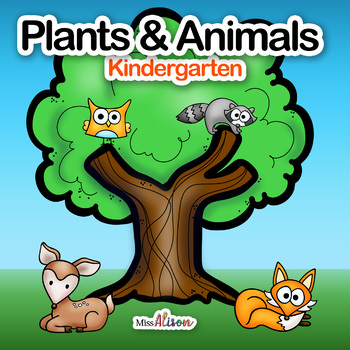Plants and Animals: A NGSS Science Unit
- PDF
- Easel Activity
What educators are saying
Also included in
- Thank you for viewing my kindergarten science bundle! I created each unit to align with the new NGSS standards. Each unit is designed to be engaging and hands on for students, and accessible and with minimal prep for teachers. This Kindergarten Science Bundle that I have created aligns with MysteryPrice $19.00Original Price $24.00Save $5.00
Description
This Plants and Animals Science Unit that I have created aligns with NGSS (Next Generation Science Standards) and with Mystery Science Kindergarten Unit 3: Plants and Animal Secrets (this product can also be used without pairing it with Mystery Science).
Save over 20% on the Kindergarten Science Bundle
What is included in Plants and Animals Science Unit:
- 11 teacher lesson plans
- vocabulary cards
- Printable / projectable books
- Plants and Animals science journal (22 activity pages)
- STEM activity
- suggested books to read
- suggested videos to watch
Included Lessons:
Lesson 1: Living and Nonliving
Lesson 2: How Things Grow
Lesson 3: Animal Needs
Lesson 4: Animal Focus: Tree Squirrel
Lesson 5: Animal Homes
Lesson 6: Animal Habitats
Lesson7: Plant Needs
Lesson 8: Parts of a Plant and How to Grow a Plant
Lesson 9: STEM Activity: Radish Seed Investigation
Lesson 10: Ways to Help the Earth
Lesson 11: Our Earth, Our Home
Standards Covered:
K-LS1-1: Use observations to describe patterns of what plants and animals (including humans)
need to survive.
K-ESS3-1: Use a model to represent the relationship between the needs of different plants or
animals (including humans) and the places they live.
K-ESS2-2: Construct an argument supported by evidence for how plants and animals
(including humans) can change the environment to meet their needs.
K-ESS3-3: Communicate solutions that will reduce the impact of humans on the land, water, air, and/or other living thing in the local environment.
K-2 ETS1-1: Ask questions, make observations, and gather information about a situation people want to change to define a simple problem that can be solved through the development of a new or improved object or tool.
You can find more science resources in my store below:
Forces and Motion: A Kindergarten NGSS Science Unit
Weather and Seasons: A Kindergarten NGSS Science Unit
Light and Sound: A First Grade NGSS Science Unit
Sun, Moon and Stars: A First Grade NGSS Science Unit
First Grade NGSS Science Bundle
Animal Biodiversity: A Second Grade NGSS Science Unit
Plant Adaptations: A Second Grade NGSS Unit
***Follow my store! You will receive an email every time I put up a freebie or a new product for sale.







